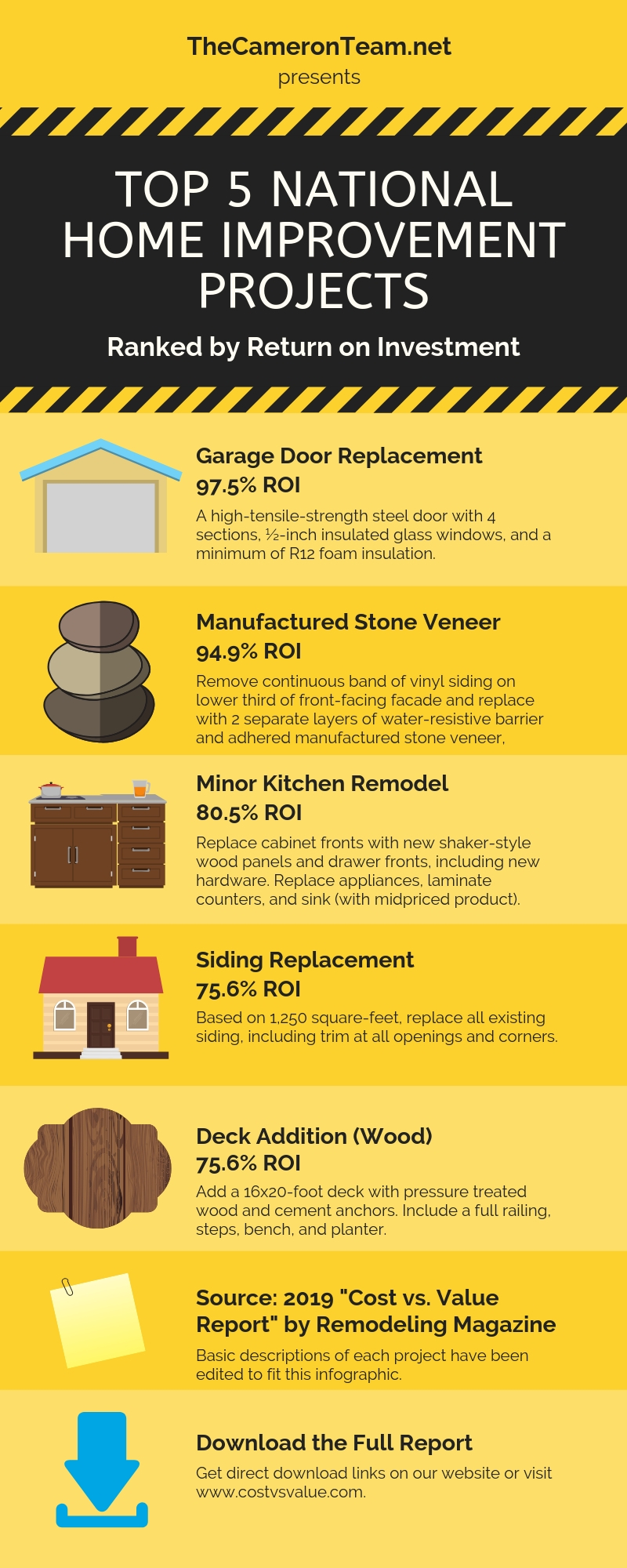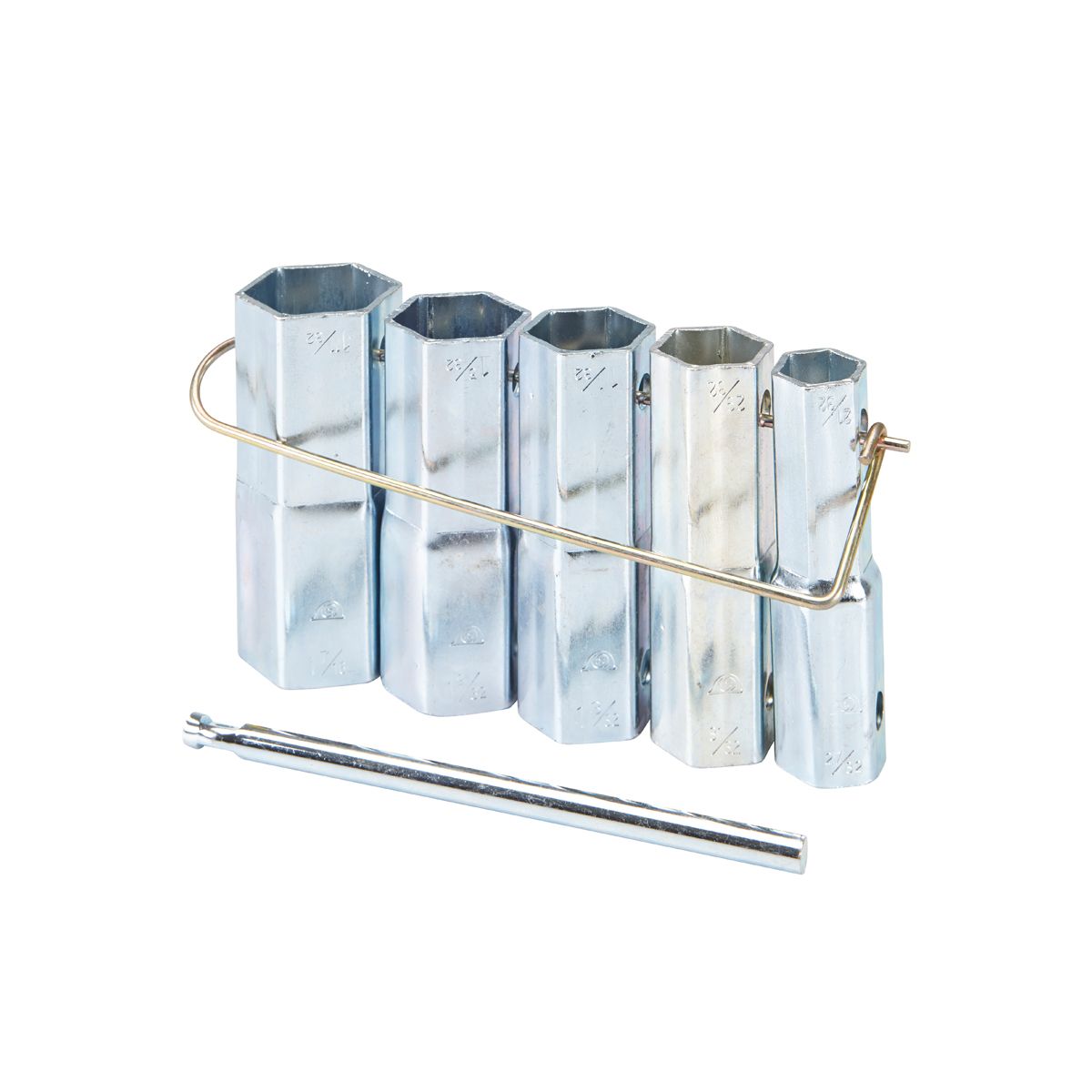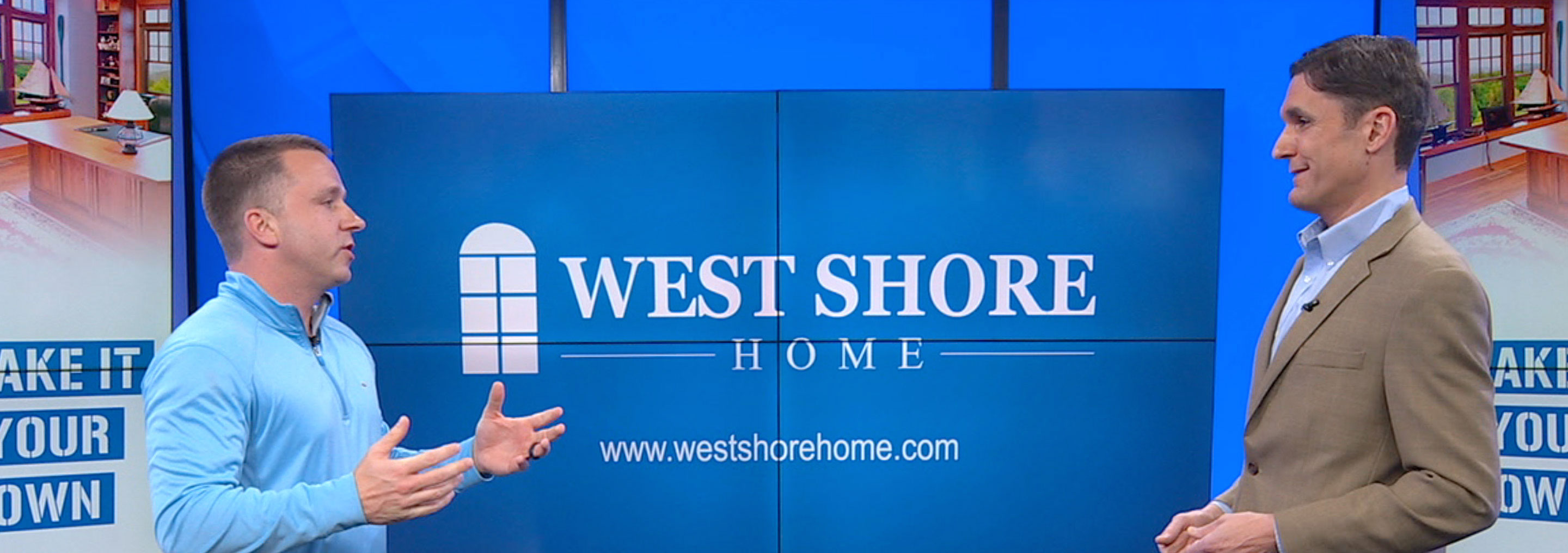
It is very common to think of home improvements as an annual expense. However there are many projects with very low returns. Some of these projects are sentimental. However, some are necessary. There are many investment calculators that can help you decide which projects will give you the best return on your investment. Below are some examples of high-return projects: siding, roofing, windows, and minor renovations to kitchens.
In percentage terms, the return on investment (ROI), for a home renovation project is expressed. A 100 percent return on investment means you have recouped your entire investment. Zero percent ROI indicates that you did not spend any money. The market trends and type of project will determine the exact percentage. Kitchens, bathrooms, and family spaces will generally yield the highest return on your investment. A major bathroom remodel will typically bring in a return around 58.6%. Meanwhile, a major kitchen remodel will net a 53.9% ROI after an average expenditure of $135,547.

An excellent way to increase your home's ROI is to increase its value. Not only do home improvements add value, but they can also boost your property's resale potential. This means that if you don’t make any improvements to your property, you won’t need to pay for a remodeling contractor. You can track your return on your investment and make improvements to your home.
Your home improvement ROI could reach up to 80%. If you are looking to increase your home's heated square footage but have a low ROI, it is worth considering a project with a higher heating factor. Many homeowners find that adding functional space will boost their home's ROI. A basement renovation can improve security and efficiency, as well. If you're looking to sell your house, a smart remodeling job can bring good returns. If you are considering an improvement project, consider your ROI and the benefits that it will bring. It may surprise you at the value of your money.
The home improvement ROI of a project is very high. The most profitable projects can increase a home's worth. The costs of renovations can make homes more attractive to buyers, even though they are costly. A renovation project can cost anywhere from 2% to 103%. You can increase the value of your house by doing so. This can increase the value of your home by as much as 8%. It is important to evaluate the return on your investment if you are planning to sell the property.

You can increase your home's worth by doing some home improvements. Some projects can double the property's value. You can increase your return on investment depending on what type of home improvements you make. Some home improvements can increase your home's value by up to 96%. If you make minor improvements to your home, you may be able recoup some of your investment by selling at a higher price.
FAQ
What room should you remodel first?
The heart of any home is the kitchen. The kitchen is where you will spend the majority of your time cooking, entertaining, or just relaxing. It's where you will find the best ways to make your home more functional and beautiful.
The bathroom is an important part of any house. It provides comfort and privacy while you take care of everyday tasks, such as bathing, brushing teeth, shaving, and getting ready for bed. If you want to improve the functionality and appearance of these rooms, consider adding storage space, installing a shower instead of a tub, and replacing old fixtures with modern ones.
How do I choose the right contractor?
When choosing a contractor, ask friends and family members for recommendations. You can also look online for reviews. Check to make sure the contractor has experience with the type of construction you are looking for. Get references from other people and review them.
How much does it cost to renovate a house?
Renovations cost typically $5,000 to $50,000. Most homeowners spend around $10,000 to $20,000 on renovations.
Statistics
- They'll usually lend up to 90% of your home's "as-completed" value, but no more than $424,100 in most locales or $636,150 in high-cost areas. (kiplinger.com)
- It is advisable, however, to have a contingency of 10–20 per cent to allow for the unexpected expenses that can arise when renovating older homes. (realhomes.com)
- Rather, allot 10% to 15% for a contingency fund to pay for unexpected construction issues. (kiplinger.com)
- According to the National Association of the Remodeling Industry's 2019 remodeling impact report , realtors estimate that homeowners can recover 59% of the cost of a complete kitchen renovation if they sell their home. (bhg.com)
- Most lenders will lend you up to 75% or 80% of the appraised value of your home, but some will go higher. (kiplinger.com)
External Links
How To
How do you renovate an old house?
To begin with, I would suggest that you should first determine what type of renovation project you want to undertake. This could mean anything from replacing your kitchen appliance to completely redesigning the house.
Once you decide what kind of renovations you want, you will need to calculate how much money is available. You might find that you don't actually have enough funds to cover the full cost of the entire project. This could mean that you have to make tough decisions about which parts of your house you can afford and which you cannot.
If you decide that you're going to go ahead and carry out renovations, then there are several things that you need to consider before starting work. You need to make sure you have the right permits for your project. It's also worth checking whether you need planning permission to carry out certain types of work. If you are planning to make extensions to your house, you may need to apply to the building consent.
It is a good idea to verify with the local council before you begin work on your house. You should also check whether you require planning permission for any part of the house you plan to renovate. You might also need to check with your insurance provider if you are undertaking major work such as installing a roof.
After obtaining all permits, the next step is to select the right tools and materials. There are many different options available, so it's important to take your time to research them thoroughly. Some of the most common items that people use during their renovation projects include paint, wallpaper paste, flooring, tiles, carpets, insulation, fencing, doors, windows, lighting, plumbing, heating systems, electrical wiring, plasterboard, timber, concrete, bricks, tiling, mirrors, sinks, taps, toilets, washing machines, ovens, refrigerators, microwaves, dishwashers, vacuum cleaners, carpet cleaning equipment, air conditioning units, fireplaces, chimneys, and even garden furniture!
It is important to evaluate the quality of these items when you are shopping for them. Poor quality products can be expensive and last for a very short time. Good quality products, however, will last longer and provide more value for your money. It is important to buy the right amount of anything when buying. You shouldn't just buy too much because you might end up wasting valuable resources and having to throw away large amounts of material. Try to only buy what you actually need.
After you've selected the right materials for your job, you should plan where to store them while working on the property. If you're remodeling a large portion of the house, you may need to rent storage space to store your materials until you're ready for them to be returned inside. You can also ask family and friends to help move your items.